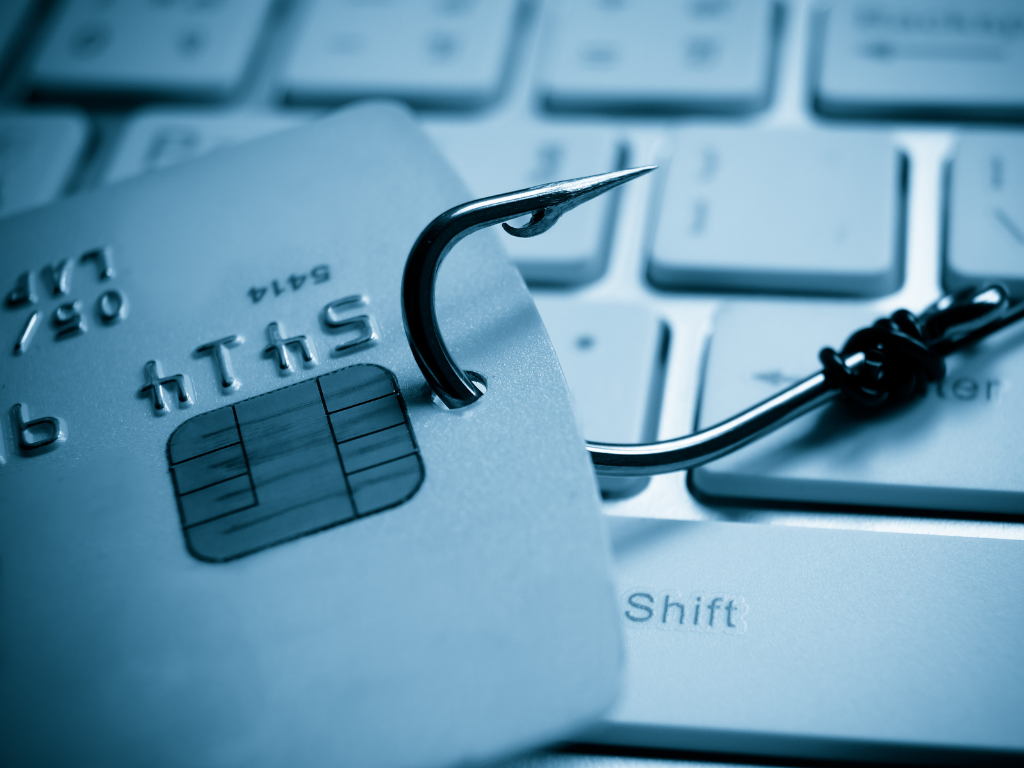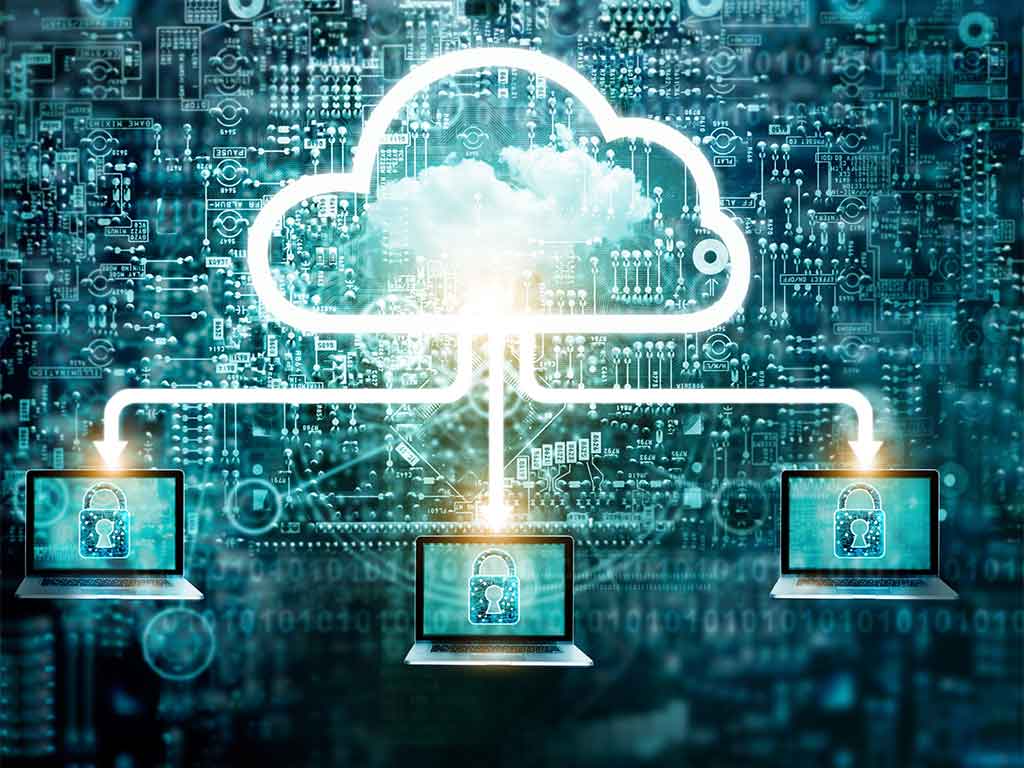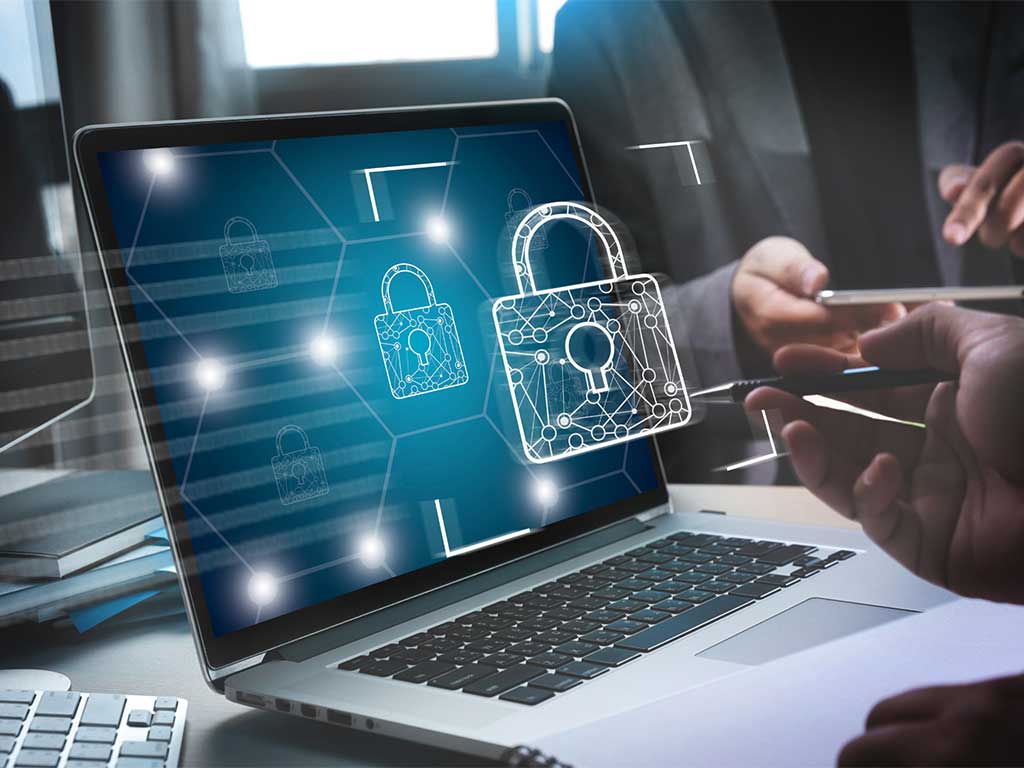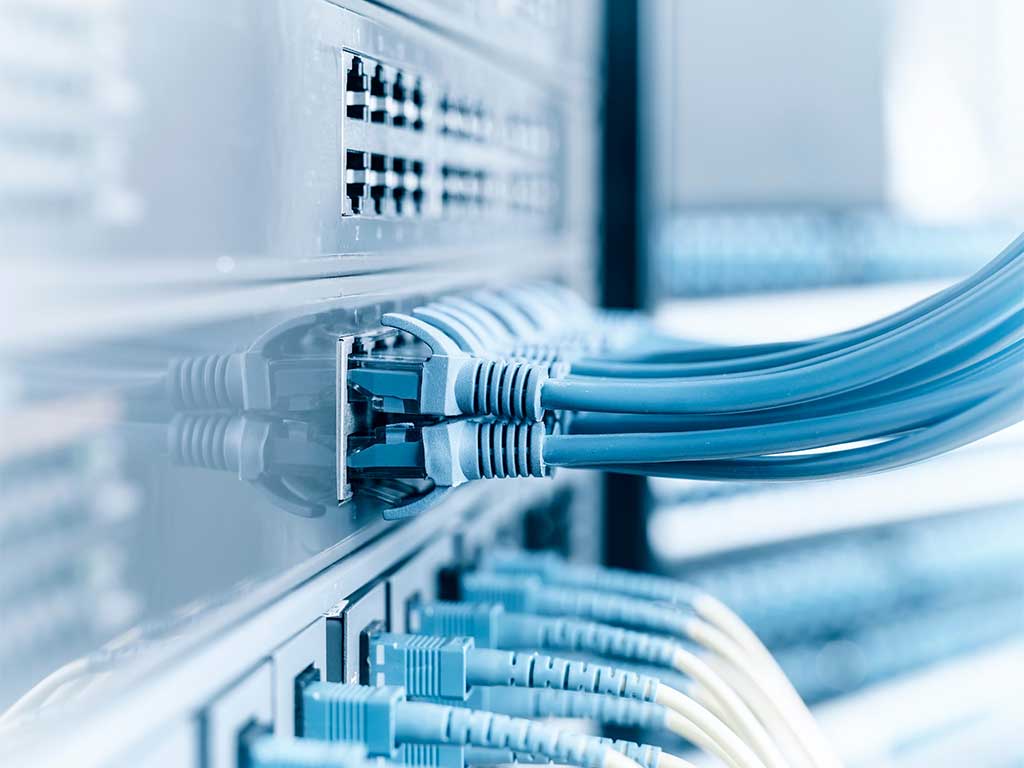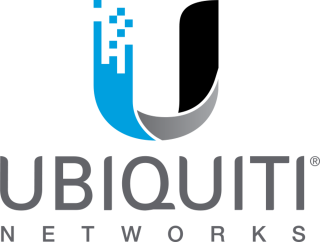In today’s digitally driven landscape, safeguarding your company’s data and ensuring seamless workflow operations are paramount, making endpoint management an indispensable tool in achieving these objectives. As businesses grow and technology evolves, the complexity of managing devices such as laptops, smartphones, and tablets—collectively known as endpoints—increases exponentially. Effective endpoint management not only helps in protecting sensitive data from breaches but also enhances operational efficiency, thus serving a dual purpose that underscores its importance in the modern workplace.
This article is designed to guide you through understanding what endpoint management entails, its critical components, and why it’s more important than ever in the era of remote work. You’ll gain insights into key aspects including endpoint privilege management and unified endpoint management, along with a review of the latest endpoint management software that can streamline these processes. Additionally, we will discuss the challenges you may face while implementing endpoint management solutions and provide best practices to overcome them, ensuring you’re well-equipped to keep your company’s digital assets secure and operations running smoothly.
What Is Endpoint Management and Why Is It Important?
Endpoint management is a comprehensive strategy designed to secure and manage all user devices that connect to your network. This includes a wide array of devices from laptops and smartphones to IoT devices and servers. By ensuring each endpoint complies with your security policies, endpoint management forms a crucial part of your organization’s cybersecurity framework. It’s designed to both anticipate and neutralize threats before they become significant, through continuous monitoring of endpoints for any suspicious activities. This proactive approach allows IT teams to quickly identify and address potential security breaches, thereby safeguarding critical data and ensuring business continuity.
One of the key features of effective endpoint management is automated patch management, which significantly reduces the vulnerability exposure window by up to 80%. This automation ensures that all devices are promptly updated, allowing your IT team to concentrate more on strategic initiatives rather than routine maintenance. Moreover, the visibility provided by real-time monitoring and alerting capabilities is essential in cybersecurity. It ensures that your team has a comprehensive view of your network’s health at all times, enabling quick detection and remediation of irregularities such as unauthorized access or unexpected data flows.
Efficiency and security are intertwined within endpoint management systems. Automation and scripting capabilities remove the burden of repetitive tasks from your IT team, enhancing their ability to manage and secure devices effectively. This is particularly beneficial in scaling IT operations securely. Additionally, with the increasing adoption of remote and hybrid work models, the ability to provide immediate support to offsite employees is crucial. Endpoint management solutions facilitate rapid remote support, enabling IT teams to diagnose and resolve issues without needing physical access to the device, thus boosting productivity and enhancing employee satisfaction by minimizing downtime.
In summary, endpoint management is not just about controlling and securing devices; it’s a strategic approach that plays a pivotal role in an organization’s overall IT security strategy by enhancing operational efficiency and maintaining continuous business operations.
Key Components of Endpoint Management
Endpoint management is a multifaceted process crucial for maintaining the security and efficiency of your IT environment. It encompasses several key components that work together to ensure your network and devices are managed effectively. Let’s explore these components in detail.
Device Provisioning
Device provisioning is the initial step in endpoint management, involving setting up devices with the necessary configurations for their integration into the corporate environment. This process includes installing and configuring software, setting security parameters, and ensuring that devices comply with organizational policies. For instance, IT administrators can use Endpoint Central to distribute configurations across devices running on various operating systems such as Windows, Mac, and Linux. Additionally, profiles for mobile devices and modern laptops can be managed through profile management systems, allowing for the provisioning of Android, Apple, and other devices efficiently.
Monitoring and Reporting
Effective endpoint management also requires continuous monitoring and robust reporting mechanisms to maintain control over the IT environment. Monitoring involves overseeing the health and activity of all endpoints to detect and respond to issues promptly. This is crucial for identifying potential security threats or performance bottlenecks that could impact business operations.
Reporting, on the other hand, provides insights into the compliance and status of devices. Tools like Microsoft Intune offer comprehensive reporting capabilities, allowing administrators to generate detailed reports on device compliance, health, and trends. These reports can be categorized into operational, organizational, historical, and specialist focus areas, helping different stakeholders within the organization to take informed actions based on real-time data.
Security and Compliance
The cornerstone of endpoint management is ensuring that all devices adhere to stringent security and compliance standards to protect organizational data and prevent unauthorized access. This involves implementing a suite of security measures including antivirus software, firewalls, and intrusion detection systems. Endpoint Security Management is a critical branch that focuses on securing devices from cyber threats by deploying appropriate security protocols.
Moreover, compliance policies play a pivotal role in endpoint management. These policies ensure that devices operate according to the organization’s standards and legal requirements. Key policies include privilege use, password management, encryption, software installation, and patch management, among others. These policies help in maintaining the integrity and confidentiality of data across all endpoints, thereby minimizing the risk of data breaches and other security incidents.
By understanding and implementing these key components of endpoint management, your organization can enhance its IT operations, improve security, and ensure continuous compliance with industry standards. This strategic approach not only protects your digital assets but also supports overall business efficiency and resilience.
Endpoint Management in Remote Work Environments
Remote Endpoint Management has escalated to a top priority for IT teams, especially in light of the global shift toward remote work due to the coronavirus pandemic. With approximately 62% of employees now working remotely on a daily basis, the need for robust endpoint management solutions has never been more critical. These solutions are essential for securing network devices, encrypting corporate data, and providing IT administrators with the tools to effectively oversee a company’s remote endpoints.
Remote Device Management
Remote device management is pivotal in setting up, accessing, controlling, and monitoring remote machines from a central location. This ensures that all devices, whether they are desktops, laptops, servers, smartphones, or tablets, are consistent, up-to-date, and operating smoothly, irrespective of the user’s location. Before issuing new devices to remote employees, it is crucial to ensure they meet company requirements through the installation of the correct OS, device drivers, and applications, along with necessary configurations like domain joins and network mapping. Once configured, these devices must be made discoverable to facilitate management across various networks and user roles.
Network Access Control
Given the dispersed nature of remote work, network access control becomes even more significant. IT teams need to manage endpoints by supervising and authenticating the access rights of devices connected to the network. This involves deploying security policies to prevent both external and internal threats caused by unauthorized access. The implementation of robust IT management software aids in overcoming the challenges posed by extending in-house management models to remote teams, which could expose endpoints and corporate data to security vulnerabilities.
Support and Troubleshooting
Support and troubleshooting in remote work environments are crucial for maintaining high productivity and minimal downtime. Remote endpoint management solutions enable IT teams to perform unattended remote access, allowing them to resolve issues at any time, even off-hours when employees are not logged in. This capability is essential for conducting maintenance tasks and ensuring that all systems function optimally. Additionally, IT administrators manage applications, system settings, desktop configurations, and security policies remotely, deploying custom scripts or predefined configurations to secure corporate data effectively.
By integrating these practices into your remote work strategy, your organization can enhance its endpoint management, ensuring that all remote devices are secure, compliant, and operating efficiently. This strategic approach not only protects your digital assets but also supports overall business efficiency and resilience in an increasingly remote work landscape.
Tools and Software for Effective Endpoint Management
Selecting the right tools and software is crucial for effective endpoint management. These technologies not only streamline the management of devices across your network but also enhance security and compliance. Let’s delve into some of the key solutions that can help you manage and secure your endpoints efficiently.
Unified Endpoint Management (UEM)
Unified Endpoint Management (UEM) tools are essential for organizations looking to manage a diverse array of devices from a single console. UEM solutions integrate the capabilities of various older technologies like Mobile Device Management (MDM) and Enterprise Mobility Management (EMM), along with Client Management Tools (CMT). This integration allows for comprehensive visibility and control over all endpoints, not just mobile devices. For instance, UEM tools enable IT teams and Managed Service Providers (MSPs) to monitor and manage endpoints and applications effectively, ensuring both security and operational efficiency.
A robust UEM tool should offer several key features:
- Device Management: A centralized console should allow you to monitor, manage, and troubleshoot endpoints from anywhere, at any time. This includes viewing all devices, distributing software, configuring role-based access, administering patches and updates, and generating compliance and health reports.
- Application Controls: UEM should enable the distribution of applications through automatic rollouts or an app-store experience, along with creating allow/deny lists to secure application usage on devices.
- Device Compatibility: The tool should support various types of endpoints and operating systems, including Windows, Mac, Linux, iOS, Android, and IoT devices.
- Integrations: Effective UEM tools integrate seamlessly with other management tools, user directories, and productivity suites like Microsoft 365 or Google Workspace, enhancing deployment and management efficiency.
- In-built Security Features: Some UEM tools come with built-in security features like multi-factor authentication, VPNs, and malware scanning to enhance endpoint security.
Mobile Device Management (MDM)
MDM solutions are specifically designed to manage mobile devices such as smartphones and tablets. These tools allow IT teams to configure usage and security policies to protect the devices and the corporate network. MDM is particularly useful for organizations with a significant number of remote workers or those that adopt a Bring Your Own Device (BYOD) policy. Key features of MDM include the ability to provision, enroll, encrypt, and remotely manage company-owned and personal mobile devices.
Endpoint Detection and Response (EDR)
Endpoint Detection and Response (EDR) tools are critical for identifying and responding to security threats. EDR solutions continuously monitor endpoints to detect malicious activities and anomalies. Once a threat is detected, EDR tools help in quickly containing the threat and mitigating any potential damage. These tools are integral to a proactive security strategy, ensuring that threats are managed promptly and effectively.
By incorporating these tools into your endpoint management strategy, you can ensure a robust security posture and streamlined operations across your network. These solutions not only simplify the management of a diverse range of devices but also bolster your organization’s defense against evolving cybersecurity threats.
Challenges in Implementing Endpoint Management
Implementing effective endpoint management is crucial for maintaining the security and efficiency of your IT infrastructure. However, several challenges can hinder your efforts to secure and manage the devices that connect to your organization’s network. Let’s explore these challenges in detail.
Security Threats
Endpoints are often the target of various security threats, including malware, ransomware, and unauthorized access. As the number of devices increases, so does the vulnerability of your network. Protecting these devices is essential to safeguard your organization’s data and systems. Phishing attacks, insufficient patch management, loss or theft of devices, and software exploits are common threats that need robust policies to mitigate risks. Moreover, cybersecurity attacks have become more sophisticated, requiring enhanced security features beyond traditional antivirus solutions. Implementing endpoint detection and response (EDR) systems can help detect vulnerabilities, perform behavioral analysis, and identify suspicious activities, significantly strengthening your security posture.
Scalability Issues
As your organization grows, so does the number of devices and users, making it increasingly complex and resource-intensive to manage and secure all endpoints. Implementing a scalable and efficient endpoint management solution is crucial. The need for flexibility in software usage has also become apparent, especially with shifts such as the move to cloud services. Scalability challenges can greatly impact your organization, especially during sudden changes, such as those brought on by remote work or organizational acquisitions.
User Compliance
Ensuring that users comply with your organization’s security policies and procedures is another significant challenge. User behavior can often be the weakest link in your security chain. Educating users on the importance of endpoint security and enforcing compliance measures are crucial steps in maintaining a secure environment. Defining acceptable use policies for devices helps guide users on security practices, software installations, and internet usage. It is essential that each user understands these policies and adheres to them to prevent security breaches and data loss.
By addressing these challenges through strategic planning and the implementation of advanced technologies, you can enhance your endpoint management systems, ensuring that your organization’s devices are secure, compliant, and operating efficiently.
Best Practices for Endpoint Management
Regular Updates and Patching
Keeping your endpoint systems updated is crucial for maintaining security and operational efficiency. Regularly updating operating systems and applications helps to mitigate vulnerabilities that could be exploited by cybercriminals. Implement automated patch management tools to streamline this process, ensuring that all endpoints are consistently protected against known threats. Prioritize patches based on their severity and potential impact and consider scheduling these updates during off-peak hours to minimize disruption to your workflow. Testing updates in a non-production environment before a wider rollout can also prevent unforeseen issues that could affect business operations.
Employee Training and Awareness
The human element plays a critical role in the security of endpoint systems. Regular cybersecurity training sessions are essential for empowering your employees with the knowledge to protect endpoints effectively. Educate your team on recognizing phishing attempts, securing sensitive data, and adhering to company guidelines for device usage. This proactive approach not only bolsters your security but also fosters a security-conscious culture within the organization. Utilize engaging methods such as phishing simulations to test the effectiveness of the training and ensure that all employees are vigilant and informed about potential security threats.
Policy Enforcement
Strong policy enforcement is foundational to effective endpoint management. Develop and maintain comprehensive security policies that cover device encryption, password protocols, and data protection measures. Ensure that these policies are clearly communicated to all users and that compliance is regularly audited. Use automation to enforce these policies consistently across all endpoints, reducing the risk of human error and enhancing overall security posture. Define acceptable use policies for devices to guide users on security practices, software installations, and internet usage, ensuring that every user adheres to these guidelines to maintain the integrity and security of your network.
Conclusion
As we journey through the evolving workplace landscape, the significance of implementing effective endpoint management solutions has never been more vital. From safeguarding sensitive data against unprecedented security threats to enhancing operational efficiency, the comprehensive guide provided herein elucidates key components, challenges, and best practices in endpoint management. By embracing these strategies, organizations can secure their digital assets and maintain continuous business operations, highlighting the dual purpose of endpoint management in fortifying cybersecurity frameworks while streamlining IT operations.
The culmination of our discussion underscores the necessity for continuous adaptation and vigilant incorporation of endpoint management solutions within the modern digital infrastructure. As technology evolves and the perimeter of work extends beyond traditional borders, the role of endpoint management in ensuring seamless, secure, and efficient business practices becomes increasingly paramount. Through strategic planning, regular updates, and fostering a culture of security awareness, organizations are better positioned to navigate the complexities of today’s digital landscape, positioning themselves for success in an ever-connected world.
FAQs
What steps are involved in implementing endpoint protection?
To effectively implement endpoint protection, follow these steps:
- Assess Your Endpoint Security Needs: Evaluate the specific security requirements of your organization.
- Choose Your Endpoint Security Solutions: Select appropriate security tools and software that meet your needs.
- Deploy Your Endpoint Security Solutions: Install and configure the chosen security solutions across your organization.
- Monitor and Manage Your Endpoint Security Solutions: Continuously oversee and adjust your security measures to ensure they are effective.
- Educate and Train Your Users: Make sure that all users are informed about security best practices and the importance of following them.
- Consider Additional Factors: Always be aware of emerging security threats and evolving technologies that might affect your security strategy.
What is an endpoint management solution?
An endpoint management solution is a system that enables the policy-based control of networked devices such as PCs and mobile devices. It ensures these devices function properly and protects them, along with the data they contain, from cyber threats.
What are four key steps to protect endpoints in the cloud?
When securing endpoints in the cloud, consider these four key practices:
- Implement Strong Authentication Measures: Ensure that access controls are robust and reliable.
- Use Endpoint Detection and Response (EDR) Solutions: Employ EDR tools to detect and respond to security threats promptly.
- Manage and Monitor User Activity: Keep a close watch on user activities to prevent unauthorized actions.
- Regularly Update and Patch Software: Maintain the security of your systems by updating and patching software as needed.
What does the endpoint management system process entail?
Setting up an endpoint management system involves several critical steps:
- Select an IT or IT-Security Vendor: Choose a reputable provider for endpoint management software.
- Deploy the Management Software: Install the software and set up its configuration.
- Enroll Devices Remotely: Use the management platform to enroll devices and manage them centrally.
- Automate Network Policy Enforcement: Implement automation for network policies to ensure consistent security measures.
- Configure Necessary Settings: Set up Wi-Fi, VPN, and other necessary configurations to keep your network secure.
